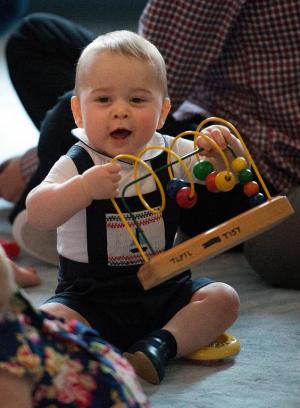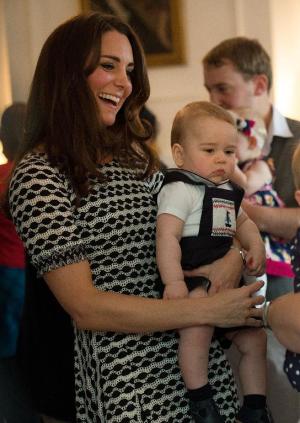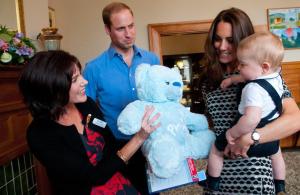When people meet Andrew Phillips, they cast him off as anxious. Maybe irritable, and certainly disconnected.
Then there are the people who know him well. The people who say he's funny, sweet and very smart.
"Those are two completely different kids," says his mom, Leslie Phillips, of the two descriptions. That's because Andrew, 14, has autistic disorder, the most severe of the autism spectrum disorders -- which also include Asperger's syndrome and Pervasive Developmental Disorder. "He struggles with communicating with people in a meaningful way, so to be a friend to Andrew, you have to take the time to get to know him and be around him."
In late March, the Centers for Disease Control and Prevention released new data that suggests 1 in 68 8-year-olds is now affected by autism, a 30 percent jump since 2012. That means virtually every grade in every elementary school has at least one autistic student -- and it's likely you know one (or more) of them.
Autism affects the way a person's brain and body work, and someone with the disorder might have trouble speaking, make strange sounds or not talk at all. About 25 percent of people diagnosed with an autism spectrum disorder are considered nonverbal, but they can sometimes communicate by writing, sign language or picture cards. Autistic people may flap their hands, spin in circles, do or say the same things repetitively, or sit quietly and avoid looking at others.
But none of that dampens the fact that they're intelligent, capable, passionate, honest people. People who, in many cases, deeply value friendship. "It's so hard for Andrew, but I don't think there's anything more important to him than being connected with other people," says Phillips, who lives in Katy, Texas, with her three sons and does advocacy work for the National Autism Association. "I think if autistic kids could say one thing to people, it would be this: Don't give up on me."
As we mark National Autism Awareness Month, consider these ways to be a friend to someone with autism:
Don't assume he or she doesn't value friendship. Yes, there are communication challenges and trouble with social interactions. But that doesn't mean friendship isn't important. "The reality is that autistic people, like neurotypical people, are very diverse in our levels of sociability and desire for friendships," says Lydia Brown, a junior at Georgetown University who has autism. Some people with autism are exceedingly social, while others are significantly more introverted. "But like all people, we value others who want to be our friends for the sake of who we are," Brown says, adding that "we seek friendships based on mutual interest and respect, shared values and negotiated boundaries."
[Read: An All-Out Assault on Autism .]
Be patient. Meet somebody where he is -- don't try to change him so he becomes what you consider acceptable. "You need to be sensitive to the fact that they're doing the best they can, just as you're doing the best you can," says Lisa Goring, vice president of family services at the advocacy group Autism Speaks. "There's no reason they need to be the only one to change."
Communicate clearly. Speak at a reasonable pace and volume -- and keep in mind that it's often helpful to use short sentences. Gestures, pictures and facial expressions may also work well. Speak literally rather than using confusing figures of speech, and when you ask a question, don't expect an immediate response -- give your friend extra time.
[Read: You! Too! Can Become More Patient .]
Make plans. There's a good chance someone with autism wants to be included but doesn't know how to ask. A number of formal school programs pair autistic kids with neurotypical buddies, setting up dinner or movie nights. But little or no interaction occurs outside those structured times, Phillips says. "Real friendships are made in the cafeteria at lunch, or in the stands at the softball game, doing normal daily activities." She says her oldest son, a 19-year-old who has Asperger's, found a few close friends in elementary school. As the years progressed, he always had someone to sit with at lunch and a friend in gym class. "Those are the times when kids who are alone get bullied," Phillips says. "It's really important that one or two people -- it doesn't have to be a big group -- are spending time with that person on a regular basis."
Respect sensory differences. People with autism are often unusually sensitive to sounds, sights, touch, taste and smells. High-pitched sounds like fire alarms may be painful; scratchy fabrics intolerable. "A good friend will learn to respect sensory differences, whether or not they understand the reasons or causes for them," Brown says. "Don't question or doubt someone's knowledge of their own body and mental state." Likewise, don't assume people with autism are intellectually disabled. Often, they have normal to high IQs and excel in areas such as music and math.
[Read: What You Need to Know About Autism .]
Don't treat people with autism like a project. This happens often, Brown says, stressing that friendship with an autistic person is not community service. "We don't need charity or pity friendships," she says. "And we neither want nor need people who want to 'look past the autism,' as autism is integral to our identity and experiences." Brown suggests this test to determine whether your friendship with an autistic person is a positive, healthy experience, as opposed to a charity project. Do you include the autistic person in events or nights out with your other friends? And are your perceptions of the person based on widespread stereotypes of autism or other disabilities?
Stand up for your autistic friend. Bullying, abuse and other types of violence are prevalent in the lives of autistic people -- from childhood through adulthood. If you see someone teasing or picking on an autistic peer, take a stand. "Working to end the systemic ableism that stigmatizes, isolates and normalizes violence against autistic and other disabled people ultimately benefits everyone," Brown says. "So too does working through ableism at the individual level and in one's own personal relationships."




